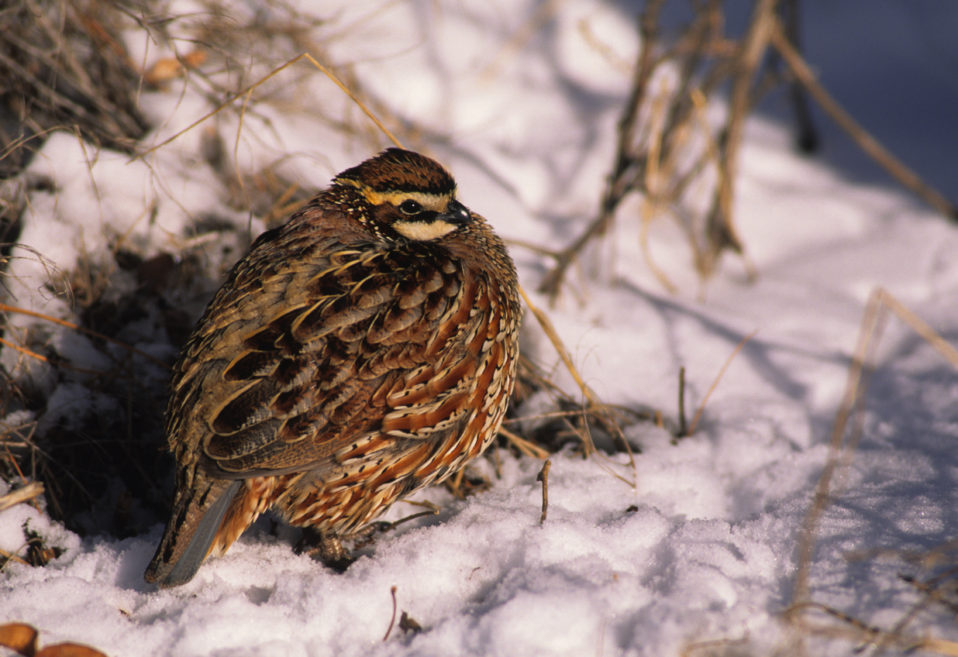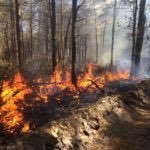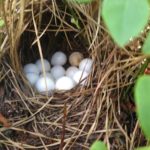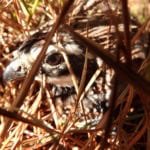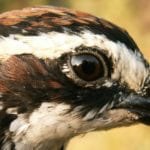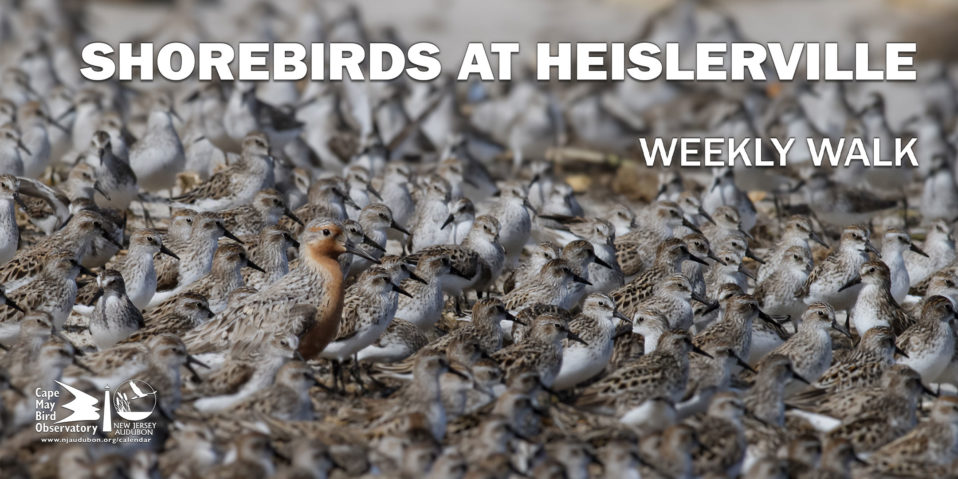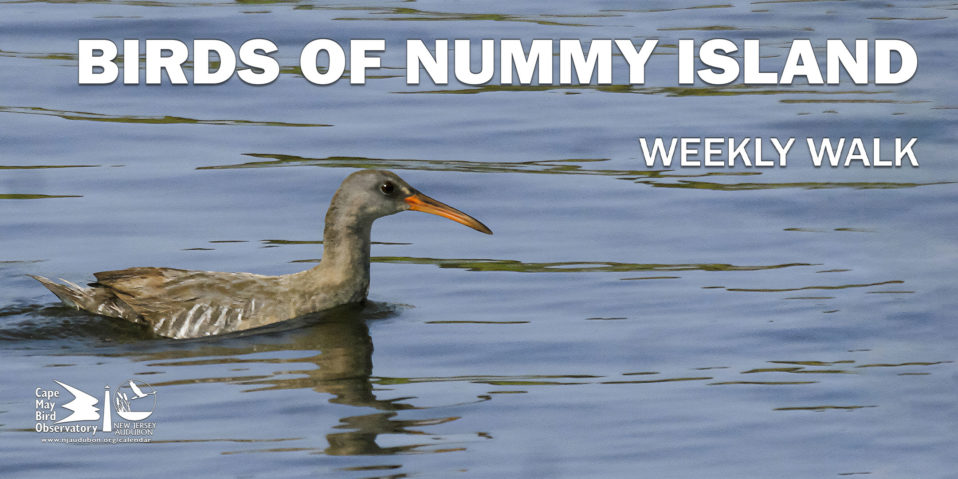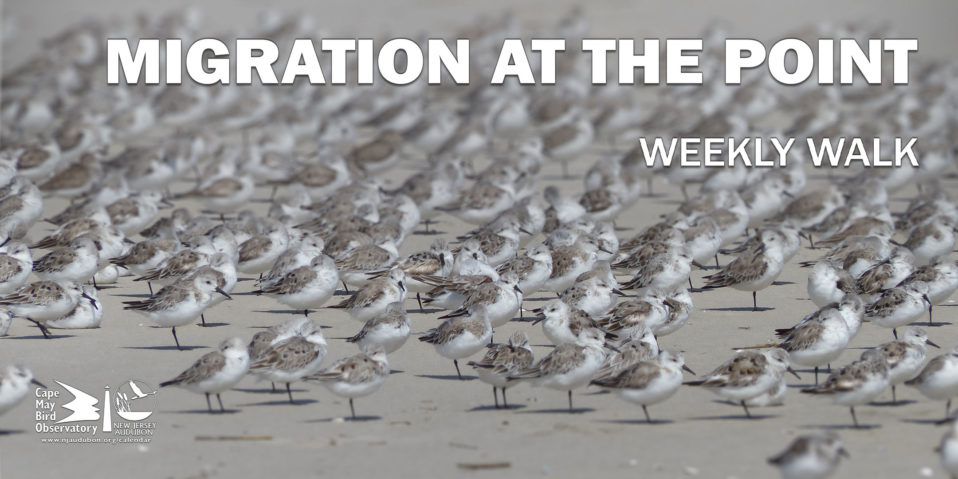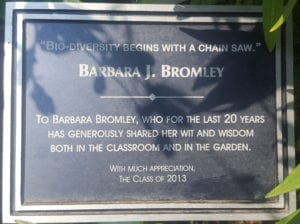
“Bio-Diversity Begins With A Chain Saw” – Barbara J. Bromley – Photo by John Parke
Retired Rutgers Extension Horticulturist and Master Gardener Barbara J. Bromley once said, “Biodiversity begins with a chainsaw.” Mix in the use of prescribed fire with ecological forest thinning practices and you have a time-tested recipe for maximizing biodiversity and mitigating the potential for undesired changes due to a host of threats (e.g. invasive plants and pests, disease, climate change, etc.).
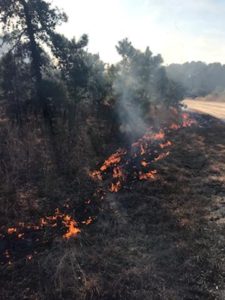
Prescribed Burn at Pine Island Cranberry Study Site -Photo by Matt Giberson
As part of a State Approved Forest Stewardship Plan, Pine Island Cranberry Company, Inc., the site of NJ Audubon’s Northern Bobwhite Restoration Initiative, implemented prescribed burning recently as a means to help improve forest and watershed health. The use of prescribed fire at the site is recognized by land managers, ecologists and biologists as an important and necessary tool to improve forest conditions and habitat for Northern Bobwhite. Although prescribed fire is the oldest land management tool used by humans, it wasn’t until the 1920’s that renowned naturalist Herbert L. Stoddard (“The Father of Quail Management”) documented the necessity of prescribed burning to maintain Bobwhite habitat.
The use of prescribed burning on the landscape helps remove built up thatch, dead leaves, twigs, and accumulated plant and organic materials that can impede quail and wildlife movement. Prescribed burning also helps to increase the growth of new and existing plants, which can provide an important food source for wildlife in the form of seeds and insects that the plants may host or provide pollen for. This restoration action of performing prescribed burning is essential to the habitat needs of Northern Bobwhite, ensuring Bobwhite have enough resources come spring and the breeding season. Prescribed burning also helps many other wildlife species of the Pinelands that evolved in this disturbance and fire dependent landscape.
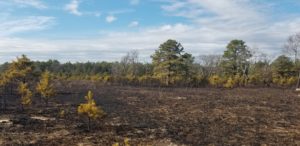
What looks like a barren landscape after a burn treatment, is really a landscape teaming with a native seed bank and plants adapted for fire to grow again, like Turkeybeard, (Xerophyllum asphodeloides) as seen in the banner photo at top of blog post. – -Photos by John Parke
Following this year’s prescribed burn at the Northern Bobwhite study site, NJ Audubon staff were on site and tracked, via telemetry, 12 radio-collared Northern Bobwhite adults, along with 20-25 juvenile birds that revealed themselves to be with the radio-collared quail. As found in previous years of the study, after burning, the birds move into denser cover along the edges of the burn areas.
“Restoration is continual,” said NJ Audubon’s Stewardship Project Director John Parke. “People often forget that you have to maintain an ecosystem, and think in the ‘long term’, and sometimes perform activities that may seem counterproductive in order to have the natural systems function properly for future generations. In a state like New Jersey that has significant pressures placed on an already limited land base it is important to realize that ‘restoration’ is not just a one or two time action, it is a series of science-based actions over a sustained period of time.”
For more information about the Northern Bobwhite Restoration Initiative go to: https://njaudubon.org/success-stories/bobwhite/




